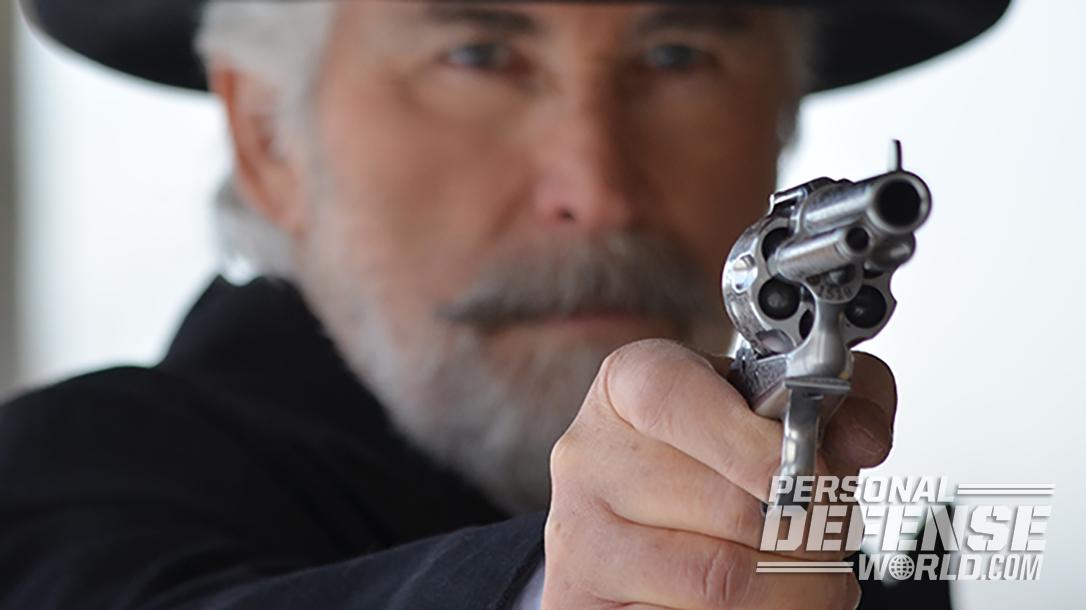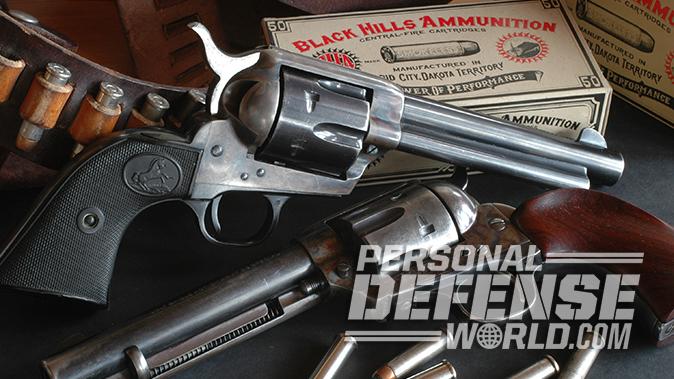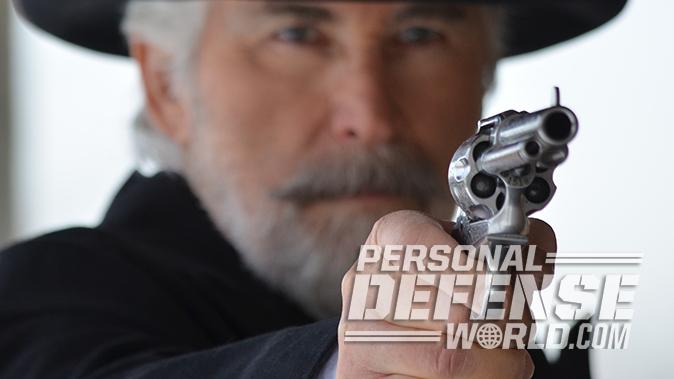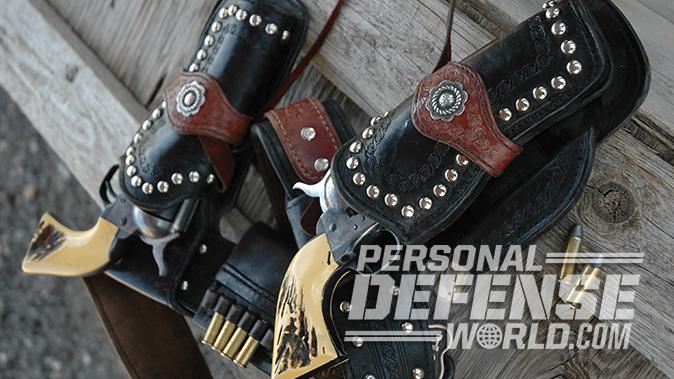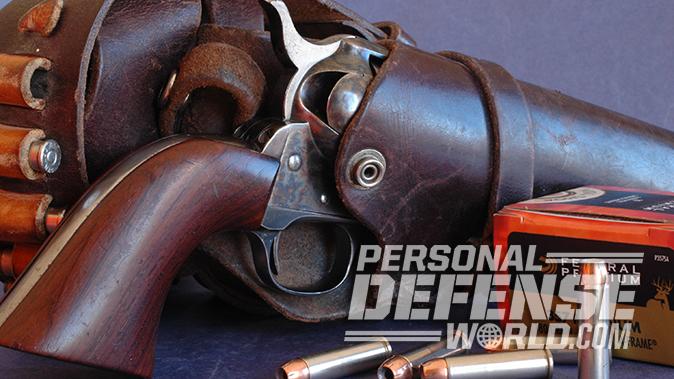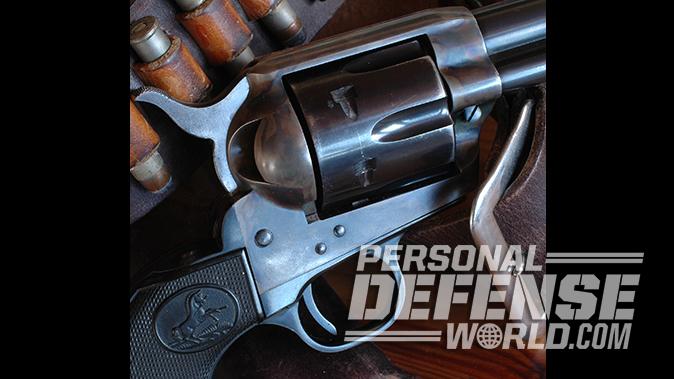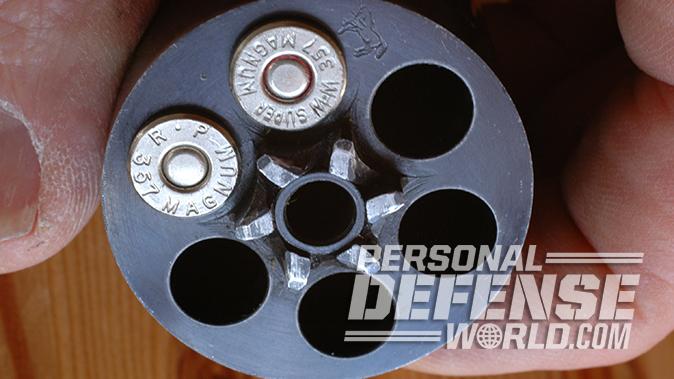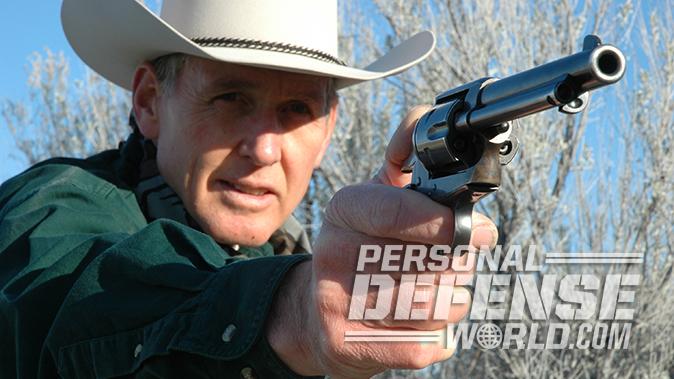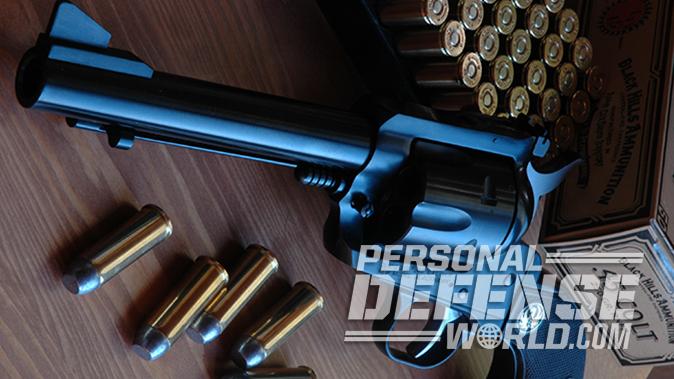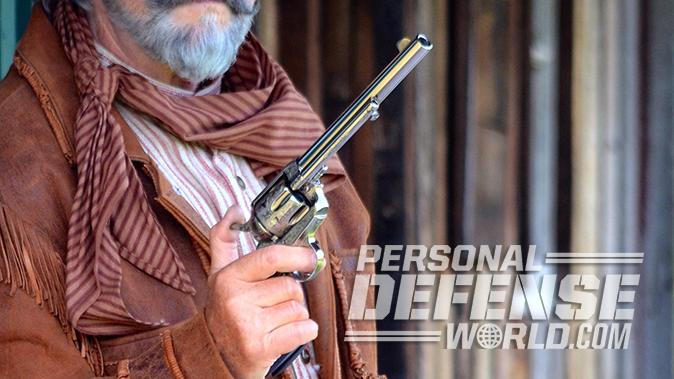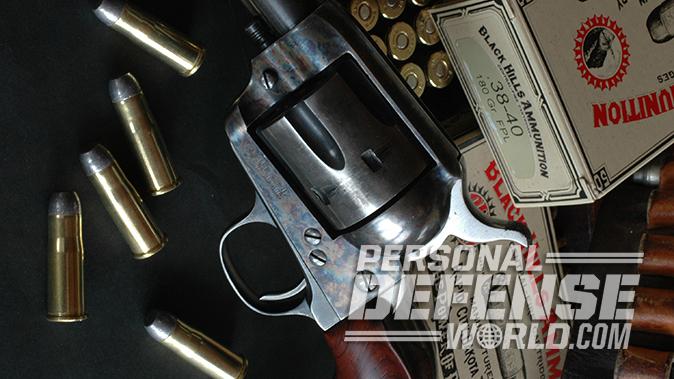By most accounts, he was born Henry McCarty in New York City in 1859. He evidently moved with his mother to Silver City, New Mexico, where she died in 1874. By then he’d become William Bonney. Soon thereafter, the law would know him as Billy the Kid.
Violence followed him to the losing side of the Lincoln County War, a fight among cattlemen sparked by the murder of John Tunstall. When Alexander McSween, sworn to avenge Tunstall, was himself killed, Billy ran. In 1879, Governor Lew Wallace (at that time writing his novel “Ben-Hur”) called a truce. But the Kid was implicated in a murder, and Lincoln County Sheriff Pat Garrett saddled up to bring him in. Garrett nabbed him at Stinking Springs. The trial brought a death sentence for the Kid. But in a daring jailbreak, he overpowered a guard and from a window called out to his nemesis, Deputy Bob Ollinger. Running toward the jail, Ollinger looked up and took a blast in the face from his own 10-gauge Whitney shotgun.
Billy vanished into the desert. On July 14, 1881, he was hiding out at Fort Sumner with his friend Pete Maxwell. Pat Garrett found him there one night, in a dark room. “Quien es?” asked the Kid of the shadowed figure. In answer, Garrett felled him with his Colt .45.
Advertisement — Continue Reading Below
Outlaws & Lawmen
By far, the best known of 19th century handguns is Colt’s Model 1873 Single Action Army, also known as the Colt Peacemaker. Priced initially at $15, the Colt Peacemaker earned as much allegiance from crooks as from lawmen. It was among the earliest revolvers to use metallic cartridges, and it chambered the potent .45 Long Colt, first loaded with 28 grains of black powder behind a 230-grain bullet. But the SAA earned its man-stopping credentials with a 40-grain charge and a 255-grain bullet that traveled at 850 fps. The gun’s adoption by the U.S. Army in 1875 secured its future.
In 1878, Colt offered its Peacemaker in .44-40, a charter round in Winchester’s Model 1873 rifle. Earlier, Colt had chambered it in the .44 rimfire used in the Henry and 1866 Winchester. But the Henry was on its way out, and the 1873 had trumped the 1866. Only 1,900 Colt .44 rimfire revolvers were built. Still, the idea of a cartridge that worked in both rifles and revolvers was brilliant—no fatal mix-ups in a fight! You could thumb all of your rounds through a pistol if your rifle jammed. Or, when low on ammunition, you could choose either arm. The .44-40 proved a top choice. At home in the Winchester, it fit the SAA perfectly. It was also much friskier than the .44 rimfire “Frontier Model” Colt revolvers, and Winchester Model 1873 rifles became wildly popular, their sales in turn ensuring a long-term supply of .44-40 ammo throughout the West.
Advertisement — Continue Reading Below
In Colt and Winchester iron, the .44-40 traveled to South America and Europe. Texas Rangers used it, as did Royal Canadian Mounted Police. Boring revolvers for rifle cartridges proved so profitable for Colt that it followed with the .38-40 and .32-20 in the Peacemaker.
The Single Action Army found its way into plenty of bad company. Cole Younger carried one; so did Emmett Dalton, the only surviving member of the five-man Dalton gang after its foiled 1892 attempt to rob two banks at once in Coffeyville, Kansas. Crawford Goldsby, who conducted a murderous career under the moniker Cherokee Bill, favored the SAA.
Robert Ford killed Jesse James with a Colt Model 1873. A remorseless killer named Harvey Logan carried one when riding with Butch Cassidy’s Wild Bunch under the alias Kid Curry. Logan shot lawman George Scarborough dead four years after Scarborough pumped seven bullets into John Selman, who also wore a badge. Selman had used his .45 to snuff notorious Texas gunslinger John Wesley Hardin, shooting him in the back after Hardin threatened Selman’s son. Logan’s trail ended in 1904, when he turned his pistol on himself rather than surrender to officers. The lines between law enforcement, self- defense and revenge often blurred.
Advertisement — Continue Reading Below
English-born Texas gunslinger Ben Thompson filed off the front sight of his SAA and sped up the action, but neither modification helped when he was ambushed. Gunman John “King” Fisher met a similar end. Clay Allison lived by his gun but died ignominiously under a wagon wheel after a tumble. Notoriety from reports of his killing John Ringo may have prompted Tombstone’s “Buckskin” Frank Leslie to choose a safer career as a bum. He died in mystery, as did David Mather, whose feud with Tom Nixon put Nixon under the daisies.
Colt Peacemaker On Top
During the last quarter of the 19th century, few handguns challenged the Colt Peacemaker. Remington’s 1875 Army couldn’t compete at all in the proprietary .44 Remington chambering; in .44-40 and .45 Colt, this single action sold well enough. Smith & Wesson’s Model 3 in .44 American and .44 Russian had a top-break mechanism that could empty the cylinder in two seconds, while poking hulls from a Colt took 26 seconds. The Small Arms Board of 1870 included Major George Schofield, who urged refining the S&W for cavalry. Alas, the short cartridges of the resulting “Schofield” revolver would chamber and fire in an 1873 Colt, but the reverse was not true. Citing inevitable ammunition mix-ups in battle, the Army chose the Colt over the Smith & Wesson. Representing the Army test board, Captain John Edie said, “I have no hesitation in declaring the Colt revolver superior in most respects and much better adapted to the wants of the Army than the Smith & Wesson.”
During the next eight years, Colt built 37,063 of its SAAs under government contract. Production exceeded 550,000. Dropped from Colt’s line in 1940, the SAA was revived in 1956, then discontinued once more in the 1980s. It has been chambered for 30 cartridges, from .22 rimfire to .476 Eley. Barrel lengths without ejectors ranged from 2 inches to 7.5 inches. Lengths with ejectors: 4.75 inches to just over 16 inches. Serial numbers before Word War II ran from 1 to 357859.
Advertisement — Continue Reading Below
After the war, Colt introduced a new numbering system, beginning with 1SA. While government SAAs generally had blued barrels, casehardened frames and walnut grips, dozens of finish and grip combinations followed. Bat Masterson wanted his revolvers “nickel-plated…easy on the trigger [with] the front sight a little higher and thicker than the ordinary pistol.” He ordered eight.
About 3,500 prewar Colt Single Action Armys were factory engraved on special order or as gifts for important people. Sears’ 1901 catalog offered a “fine handsome Colt Single Action Army Revolver, .45-caliber, 5½-inch barrel, beautifully hand-engraved in leaf and scroll design on the barrel, frame, cylinder, guard and butt; blued steel finish, inlaid gold lines around the muzzle and breech of the barrel, two gold stripes around the cylinder and inlaid gold lines around the frame under the cylinder…Beautifully selected pearl handles [including a] satin-lined case covered with drab color buff leather…Our special cash price on this revolver, including case—$50.”
The Buntline Special
One rare but celebrated SAA was the Buntline Special, introduced at the Philadelphia Centennial Exhibition in 1876. It featured a 10- to 16-inch barrel with a flattop frame grooved for adjustable sights and fashioned at the rear for a detachable shoulder stock. A long hammer screw and knurled nut tightened the nickel-plated brass stock to the gun.
Advertisement — Continue Reading Below
The Buntline Special owed its label to Ned Buntline, pen name for Edward Zane Carroll Judson, born in Stamford, New York, on March 20, 1823. Growing up bored, young Edward stowed away on a merchant vessel to seek adventure. The precocious lad next joined the Navy. While at sea, he stole a pig from the midshipman’s mess and wrote about it, publishing the manuscript himself under the byline “Ned Buntline.” A buntline is a rope on the foot of a square sail for furling.
Ned polished his pen on salacious tales. One day in August 1869, he disembarked from a train in North Platte, Nebraska, seeking Major Frank North, a genuine hero with the 5th Cavalry. North brushed off Buntline’s request for an interview, but suggested he talk to a scout. Buntline found the man under a wagon, asleep and needing a bath. His name was William Cody.
Advertisement — Continue Reading Below
In short order, Buntline attached Cody’s name to North’s adventures. His imagination bridged and replaced facts. Cody became “Buffalo Bill” on Buntline’s page. Reportedly at his urging, Colt fashioned a few long-barreled 1873 revolvers with carbine stocks. Ned is said to have presented them to Bat Masterson, Wyatt Earp, Bill Tilghman and other storied lawmen. Earp may have used his to whack miscreants on the head; Buntline Specials had little real utility. Records show that Colt produced just one run of these guns in the serial range 28800 to 28830.
Generations Later
More common and practical were Sheriff’s or Storekeeper’s SAAs with 3- and 4-inch barrels and no ejectors. Shooters had to poke the cases out with a stick or pull the cylinder. Flattop Target models, made from 1880 to 1890, also came without ejectors, presumably for better balance. They were the only SAAs that came with blued (not case-colored) frames. The Bisley, with its target grip, replaced the Flattop. Bisleys featured low hammer spurs, curved triggers and large triggerguards.
Double-action revolvers would later draw law officers from the SAA—and themselves yield to autoloading pistols. The double-action Colt Lightning in .38 Long and Short Colt debuted in 1877. A .41-caliber counterpart, the Thunderer, followed. William Bonney packed a Lightning. While Pat Garrett owned a Merwin Hulbert, he used a Colt Peacemaker to gun down the Kid. Early double- action revolvers were slow on the path to reliability.
Advertisement — Continue Reading Below
Collectors dub the earliest Colt SAAs “first-generation” guns. Though they appear in myriad forms and chamberings, all were manufactured from 1873 to 1940. Second-generation Colts had a shorter run from 1956 to 1975. Third-generation revolvers date back only to 1976. While earlier Colts bring the most money at market, with everything else being equal, rare configurations and chamberings in the later versions can be just as valuable. Condition and factory embellishments figure in, too. Though even in my youth SAAs could be had for $200, ordinary first-generation guns now sell for five-figure prices! You’ll have to look hard to find even plain third-generation SAAs in new condition for less than $1,000.
